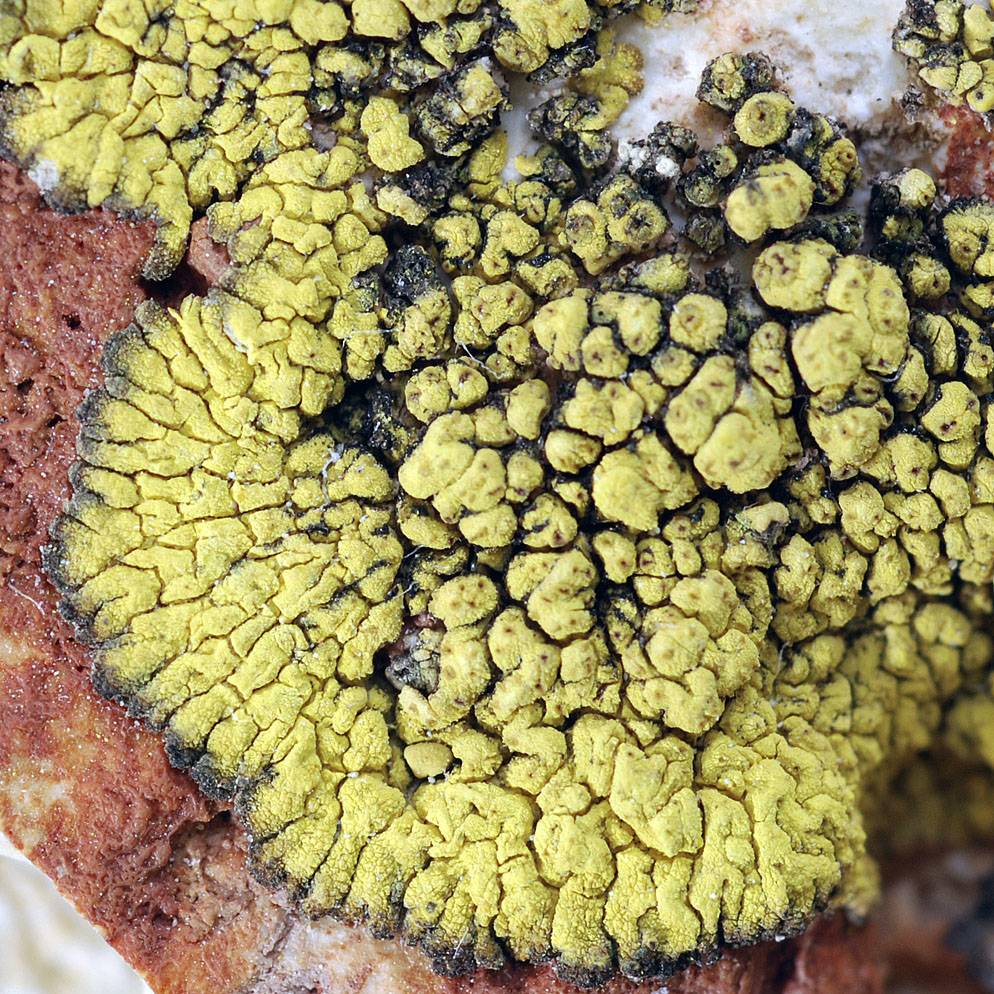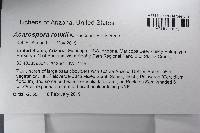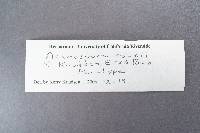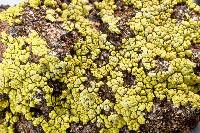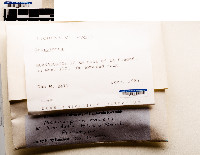
Consortium of Lichen Herbaria
- building a Global Consortium of Bryophytes and Lichens as keystones of cryptobiotic communities -
- Home
- Search
- Images
- Species Checklists
- US States: O-Z >
- US National Parks
- Central America
- South America
- US National Parks
- Southern Subpolar Region
|
|
|
|
Family: Acarosporaceae
|
Nash, T.H., Ryan, B.D., Gries, C., Bungartz, F., (eds.) 2007. Lichen Flora of the Greater Sonoran Desert Region. Vol 3. Thallus: areolate to subsquamulose, contiguous, up to at least 6 cm across, spreading by vegetative division, indeterminate or determinate with a distinctly effigurate margin, orbicular or irregular, usually two lobes per areole, convex, 1 mm long and 0.2-0.5(-1) mm wide, without a prothallus areoles: plane or convex, rounded or angular or verruculose, lobed or not, (0.5-)1-4(-5) mm across and upward to 1.5 mm thick; rim: down-turned upper surface: yellow, dull, convex, smooth in very small or thin areoles but eventually becoming rugulose, with profuse and irregular creases, often finely cross-hatched, rough, bumpy to papillate, epruinose to heavily pruinose upper cortex: paraplectenchymatous to subprosoplectenchymatous, 50-100 µm thick, with uneven, obscured hyphae in water or K; syncortex: not evident to thin but indistinct; eucortex: yellow, undifferentiated or with lower hyaline layer lateral cortex: continuous with upper cortex, forming quickly in crevices as areoles divide lower surface: greenish yellow to white, subcorticate to ecorticate algal layer: uneven, interrupted by hyphal bundles and pycnidia, undulate as upper surface becomes deeply creased and rugulose, 50-200 µm thick, algal cells up to 15 µm across; sometimes lacking in spots or beneath apothecia, sometimes lower strata feathered down into medulla medulla: prosoplectenchymatous, white to brown-stained by substrate, hyphae obscure in water, continuous with attaching hyphae, inspersed, and mixed with mineral crystals and fragments from substrate attachment: broad, without a stipe, becoming gomphate, the areole becoming lobed and elevated, subsquamulose Apothecia: immersed, usually one-to-five per areole, rarely dilated disc: reddish brown to yellow, up to 1 mm across but usually smaller, 0.2-0.5 mm across, plane, rough, epruinose or pruinose, sometimes with an umbo or ridge of sterile plectenchyma in larger apothecia parathecium: hyaline, 10-30 µm thick or expanded around disc to 50-90 µm in width, forming a parathecial crown, concolorous with thallus epihymenium: diffusely yellow to pale brown on top, granulose, 15-40 µm thick hymenium: pale yellow to hyaline, 100-170 µm tall; paraphyses: mostly 1.7-2 µm in diam. at base, septate, without expanded apices or barely reaching 3 µm wide subhymenium: hyaline, 20-30 µm thick; hypothecium: hyaline, 10-30 µm thick, sometimes indistinct asci: clavate, 80-135 x 20-25 µm, 100-200-spored ascospores: hyaline, simple, ellipsoid, 3-5 x 1.5-2.5 µm, usually broad Pycnidia: ostiole not visible, obconic to globular, 150-300 µm deep, 150-250 µm wide, sometimes with thin algal layer around it conidia: short, bacilliform, 2-2.5 x 1 µm Spot tests: UV+ orange, medulla K+ yellow, turning red, forming crystals (visible in mounted section) Secondary metabolites: norstictic acid (major), rhizocarpic acid (minor), connorstictic acid (trace), gyrophoric acid (trace), epanorin (trace) as determined by HPLC (J. A. Elix). Substrate and ecology: on volcanic rock, granite or sandstone, from 1300 m to above 4000 m World distribution: North America and South America (SW USA to Bolivia and Peru) Sonoran distribution: eastern Arizona. Notes: Acarospora. rouxii is distinct because of its rugulose morphology, its chemistry, its interrupted algal layer, and its tendency to form effigurate thalli. The holotype is very robust as are the Bell specimens from Mexico, but several paratypes were rather thin from highest elevations. The species is possibly a juvenile parasite on other saxicolous species. CHEMISTRY NOTE: Contrary to the protologue the holotype specimen does NOT contain norstictic acid; it reacts K- (not forming orange crystals in the microscope) (tested by F. Bungartz, 3-May-2019). |
|
|
|
Powered by Symbiota

